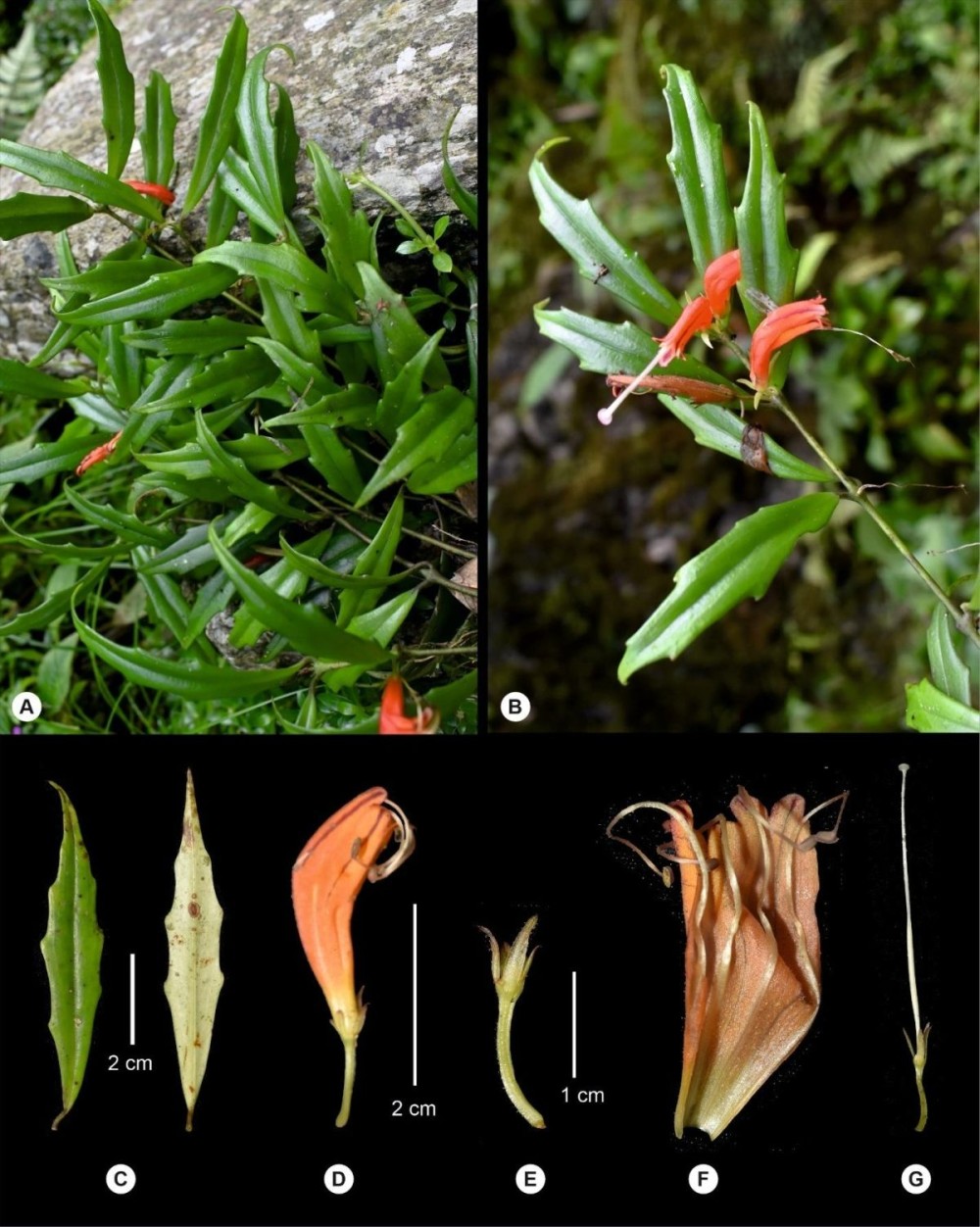Team of researcher discovered a new plant species Aeschynanthus clarkei sp. nov from the Nagaland state of Northeast India.

Dimapur, January 20 (MExN): A team of researcher have reportedly discovered a new plant species Aeschynanthus clarkei sp. nov from the Nagaland state of Northeast India.
The plant was discovered by research team lead by Dr Moaakum, Assistant Professor, Department of Botany, Kohima Science College, Jotsoma during the Floristic study of Nagaland-Myanmar border, with Dr Santanu Dey in the year 2022 and 2023 from Fakim Community Conservation Forest under Kiphire District, Nagaland, at an altitude of about 2058 m.
The genus Aeschynanthus Jack is represented by 185 species in the world, distributed from S China to Tropical Asia (POWO, 2024). In India the genus is represented by ca. 26 taxa, mainly distributed in North East India, Peninsular India and Andaman, and Nicobar Islands (Sinha and Datta, 2016; Krishna et al., 2020; Lalhlupuiiet. al., 2023; Debta, 2024).Considering its occurrence in a varied habitat, this newly described species is naturally rare.
Morphologically, this species closely resembles to Aeschynanthus lineatus Craib in having sessile inflorescences, and similar in corolla tube structure, but differs by its, leaves shape elliptic-lanceolate vs narrowly to broadly elliptic or lanceolate to obovate; calyxlobes linear, obtuse at apex, glabrous vs calyx lobeslanceolate-linear to linear-oblanceolate, outside glabrous to rust-brown pubescent. It also appears to be morphologically similar to Aeschynanthusangustioblongus W.T. Wang in leaves shape but differ in having leave margin prominently dentate vs leaves margin entire; flowers in pair vs flower solitary; style glandular pubescent vs style sparsely hairy/pubescent.
On estimation the area of occupancy (AOO) is about 8 KM2 and following the IUCN guidelines (2012, 2024), this tax on is provisionally assessed here as Critically Endangered CRB2ab (iii); D]. For correct assessment further population study needed in future.
After thorough investigation and detailed studies of the existing recorded species, the novelty of the species was confirmed.
This species is named after Charles Baron Clarke (1832–1906), a British Botanist, who contributed significantly for the family Gesneriaceae in Flora of British India.





